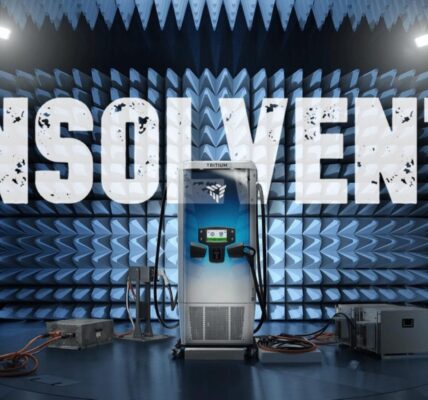When not stationed at the firehouse or battling blazes, one Aurora firefighter dedicates his time to training firefighters and departments nationwide in responding to lithium-ion battery fires and electric vehicle (EV) fires.
Paul Shoemaker, a veteran firefighter and paramedic with the Aurora Fire Department for a decade, collaborates closely with the National Fire Protection Association, the Fire Safety Research Institute, and Underwriters Laboratories. He aims to effect change in fire service practices across the nation.
“I’m teaching firefighters how to handle, mitigate, and tactically extinguish lithium-ion battery fires,” Shoemaker said.Lithium-ion batteries power a range of devices including e-bikes, e-scooters, and electric vehicles. Shoemaker noted that while firefighters have long been adept at battling standard structure fires or those involving combustion engines, the proliferation of lithium-ion batteries presents new challenges.
“With lithium-ion batteries, we’re talking seconds of changes, where someone can be saved or perish in a fire,” Shoemaker emphasized.
Just last month, firefighters in Boulder County responded to an explosion when an electric vehicle ignited in a garage in Boulder. In January, a fire ignited in a Centennial home due to a battery pack fire in an electric vehicle. Last April, an explosion occurred in Erie involving an electric jeep, resulting in a firefighter’s helmet being blown off.
“With the prevalence of these incidents, we need to take this seriously,” Shoemaker urged. “In the next few years, they’ll be everywhere, and we’ll face this problem daily.”
Shoemaker emphasized that increased training is crucial to prepare for such fires.
Over the past four years, Shoemaker has trained hundreds of fire departments and thousands of firefighters across the country.
Part of his training involves altering firefighters’ approach to lithium-ion battery fires and EV fires, and how to effectively manage such incidents.
“It changes how we fight fires and ventilate structures. These changes are significant departures from our traditional methods,” Shoemaker explained.
Trainings also cover evacuating EVs from structures, the heightened intensity of these fires, and the risk of re-ignition days later.
Shoemaker noted that extinguishing an electric vehicle fire can require between 3,500 to 5,000 gallons of water, compared to the typical 500 gallons for a combustion engine fire. EV fires also burn hotter, reaching temperatures of around 2,800 degrees compared to 1,200 degrees for combustion engine fires.
“I gather insights from across the country to elevate our local firefighters’ training, ensuring they can serve our community to the highest standard,” Shoemaker said.
Colorado’s proactive stance in enhancing fire safety has impressed Shoemaker as he has conducted training sessions for most fire departments in the state.
“It’s inspiring to see Colorado taking strides to enhance fire safety for our citizens,” Shoemaker remarked.
Shoemaker also stressed the fire risk posed by any device containing a lithium-ion battery, such as laptops and phones. He advised purchasing batteries from reputable sources, avoiding overnight charging, and refraining from charging batteries near exits to ensure safe evacuation during emergencies.








